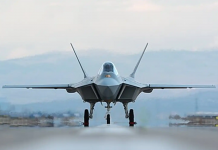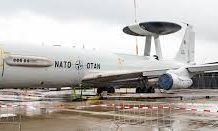
Italy is taking a significant step in enhancing its defense capabilities with the announcement of plans to establish a domestic production facility for next-generation GCAP (Global Combat Air Program) fighter jets. This move reflects Italy’s growing ambition to lead in aerospace innovation and marks a shift towards greater self-sufficiency in military aviation.
By securing a deal to build a new fighter jet manufacturing plant, Italy is positioning itself as a key player in Europe’s aerospace sector. The country, which has already been involved in the production of the F-35, will now be the only European nation capable of producing both 5th and 6th-generation fighter jets, a distinction that sets it apart from other European powers.
The new facility, located in Piemonte, will allow Italy to ramp up production of the Eurofighter Typhoon, potentially surpassing the UK’s output with an expected capacity of 90-100 jets annually. This marks a major shift in Europe’s defense landscape, consolidating Italy’s role as a leader in advanced military aircraft manufacturing.
Italy’s extensive experience with the F-35 program has equipped its aerospace engineers with the expertise needed to build and assemble sophisticated aircraft, positioning the country ahead of the UK and Japan—both GCAP partners—in producing next-generation fighters.
The Piemonte location is strategically chosen for its robust industrial base and proximity to key military infrastructure, ensuring that the facility is ideally situated to support Italy’s defense priorities. This move not only strengthens Italy’s military capabilities but also enhances its strategic position within NATO, particularly as tensions with Russia and other global security challenges grow.
The GCAP initiative, a collaborative effort between Italy, the UK, and Japan, is set to deliver a multi-role fighter designed to replace aging fleets in all three nations. Italy’s new production facility will play a central role in manufacturing this next-generation stealth fighter, which is expected to feature cutting-edge sensors, superior stealth characteristics, and advanced interoperability with unmanned aerial systems.
Beyond strengthening Italy’s aerospace sector, this development is a strategic maneuver that will bolster Europe’s defense posture. By maintaining control over the production process, Italy ensures greater flexibility and national security, reducing reliance on foreign manufacturers for critical defense technology. This will be crucial as global security dynamics evolve and advanced air threats emerge.
The factory will also stimulate Italy’s economy, creating thousands of jobs and fostering new opportunities in engineering, manufacturing, and research. The GCAP program is expected to attract further investment, boosting Italy’s competitiveness in the global aerospace market. Moreover, Italy’s involvement in GCAP aligns with its broader commitment to enhancing European security and NATO’s collective defense, especially as global tensions continue to rise.
The new fighter jet is expected to be a game-changer for Italy’s military capabilities, offering enhanced stealth, advanced avionics, and cutting-edge weapon systems. It will be capable of a wide range of missions, from air superiority to long-range strikes, and will integrate seamlessly with allied forces, ensuring interoperability with NATO and other international partners.
The GCAP fighter is designed to remain relevant well into the 2070s, providing critical air superiority for decades. The program’s joint venture, led by BAE Systems, Japan Aircraft Industrial Enhancement Co. Ltd (JAIEC), and Leonardo, aims to deliver this advanced fighter by the mid-2030s, marking a significant milestone in military aviation history.
As Italy continues to strengthen its defense capabilities, the establishment of this new production facility signals its readiness to meet future challenges head-on, positioning itself as a leader in global military aviation.





